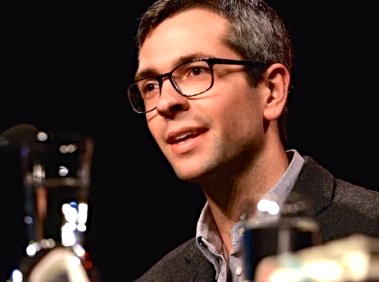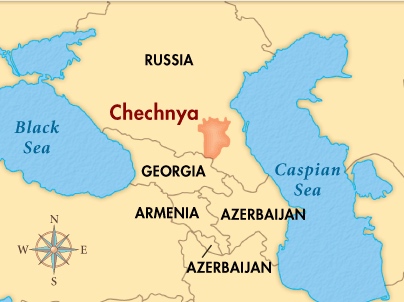Note: In 2013, Anthony Marra was WINNER of both the Anisfield-Wolf Award and the John Leonard Prize, given by the National Book Critics Circle Award for a first novel, for A Constellation of Vital Phenomena.
“How could Soviet jurisprudence remain infallible if it failed to recognize innocence? Some held on to the disbelief as they stood pressed against one another in train cars heading east across the Siberia steppe, the names of previous prisoners haunting the carriage walls in smudged chalk…But when they disembarked onto the glassy tundra, their illusion burned away in the glare of the endless summer sun…We never knew them, but we are the proof they existed. A hundred kilometers north of the Arctic Circle, they built our home.”–narrator of “The Leopard,” set in Kirovsk, Siberia, 2013.
In one of the most amb itious and energetic books of the year, Anthony Marra defies the limitations of genre by creating a book of epic status which hovers, structurally, between the novel and a collection of interrelated short stories, incorporating the best aspects of both genres. Setting the book in Siberia, Chechnya, and Leningrad/St. Petersburg between 1937 and 2013, he creates characters and their families who appear and reappear throughout the book. Often introduced in their own long stories, they and their heirs move back and forth across time slipping into the stories of other characters from the same location and adding complexity as the reader sees new aspects of their lives. A number of symbols also unite the time periods and characters – a pastoral painting by 19th century artist Pyotr Zakharov-Chechenetz, a family photograph from 1906, a print of a leopard by Henri Rousseau, a mix-tape – all of which, being portable, can move among the different settings. Specific locations within these various settings, such as Kresty Prison in St. Petersburg, the White Forest in Kirovsk, the Grozny Museum of Art, reappear as new episodes from different time periods take place, providing unity and connection over the seventy-five year expanse of Russian history.
itious and energetic books of the year, Anthony Marra defies the limitations of genre by creating a book of epic status which hovers, structurally, between the novel and a collection of interrelated short stories, incorporating the best aspects of both genres. Setting the book in Siberia, Chechnya, and Leningrad/St. Petersburg between 1937 and 2013, he creates characters and their families who appear and reappear throughout the book. Often introduced in their own long stories, they and their heirs move back and forth across time slipping into the stories of other characters from the same location and adding complexity as the reader sees new aspects of their lives. A number of symbols also unite the time periods and characters – a pastoral painting by 19th century artist Pyotr Zakharov-Chechenetz, a family photograph from 1906, a print of a leopard by Henri Rousseau, a mix-tape – all of which, being portable, can move among the different settings. Specific locations within these various settings, such as Kresty Prison in St. Petersburg, the White Forest in Kirovsk, the Grozny Museum of Art, reappear as new episodes from different time periods take place, providing unity and connection over the seventy-five year expanse of Russian history.
Set in Russia during the period that begins after the death of Lenin, the earliest stories show the strict Communist Party rule, its control of all aspects of life and thinking, and the country’s economic hardships under Josef Stalin. Later stories make references to Nikita Krushchev, Leonid Brezhnev, and Mikhail Gorbachev, the fall of Communism in the early 1990s, and the rise of Boris Yeltsin and his successor, Vladimir Putin. Marra is not writing a political history, however. Instead, he concentrates on the ordinary people who live in three different parts of the former Soviet Union during this time period, recreating the atmosphere of everyday life during this period, with all its fears and privations. In the later sections of the book, especially in the story “The Grozny Tourist Bureau, his sense of satire and dark humor rise to the fore, showing the absurdities which the main characters themselves recognize as they are determined to rebrand Grozny, the most devastated city on earth, as “the Dubai of the Caucasus.” Equally important in this story, however, are the stories of some characters whose futures seem especially bleak.
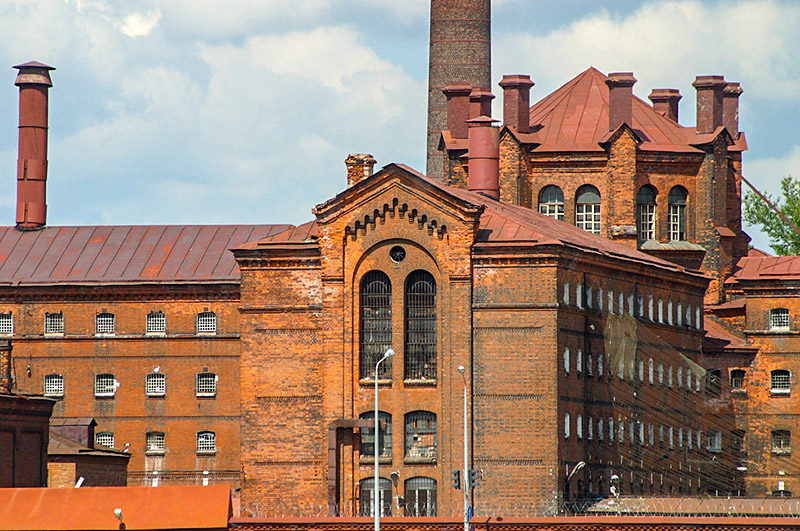
Kresty Prison in Leningrad, once an imperial wine warehouse, became a prison housing up to ten thousand prisoners during Stalin’s era and immediately after.
One of the most powerful stories in the book is the first one, “The Leopard,” about Roman Markin, “an artist first, a censor second,” who uses his talents to alter paintings and photographs for the government by eradicating those who have fallen from political favor. His situation is particularly difficult because his own brother, Vladimir (Vaska), is someone who has “fallen” – a man who has turned to the Orthodox Christian church instead of the Bolshevism of Stalin. The censor’s own role in his brother’s death remains up in the air, but he cannot help remembering a family excursion to the Petersburg Zoo, in which he saw a leopard for the first time, an event that was enhanced when he found a leopard in an Henri Rousseau painting of jungle cats. When officers bring him a family photograph from 1906, and tell him to remove his brother from it as an officer watches over him, he decides that “I had sealed myself to the state…my faith had become unshakable my loyalty unimpeachable, because if we did this in vain, all the water in the Baltic wouldn’t be enough to cleanse us.” Taking place in the 1930s, this story expands to include the censor’s future.
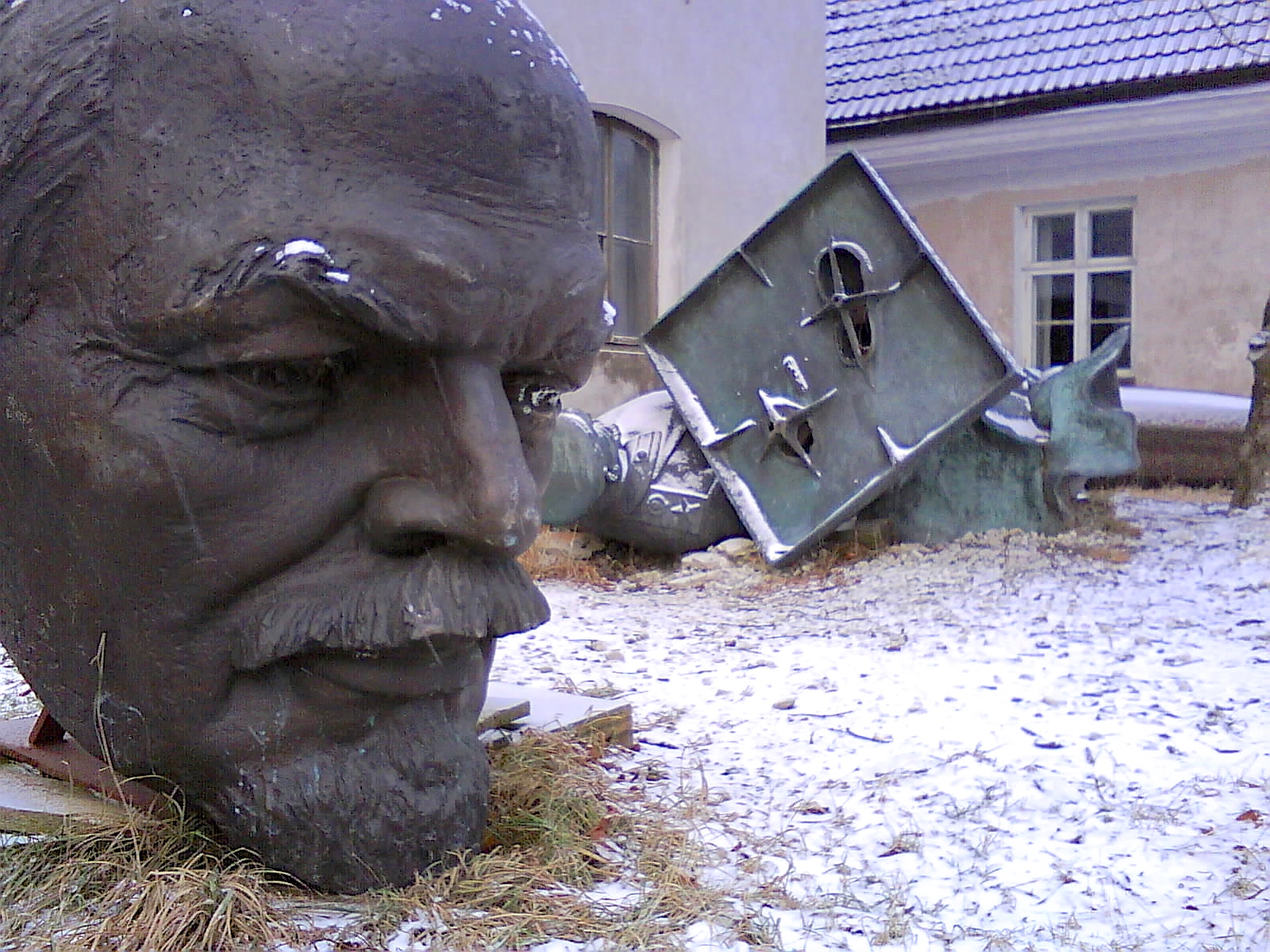
After the death of Lenin and the fall of his reputation, the head of his statue and one arm were displayed in an elementary schoolyard in Grosny, Chechnya.
The next story takes place in Kirovsk, Siberia, between 1937, when the first story takes place, and 2013, which coincides with the conclusion. Here the reader meets Galina, whose grandmother was a prima ballerina with the Kirov Ballet before her arrest for supposedly being a member of a Polish saboteur ring, the same crime for which another character is charged. In this part of Siberia, beyond the farthest northeast corner of Finland, well above the Arctic Circle, the character of Kolya, the most ubiquitous character of the book, is introduced. Twelve smokestacks, the “Twelve Apostles,” rise above the community’s smelting furnaces, which send heavy metals into Lake Mercury. In Kirovsk “a winter day is a fifteen-minute glow,” while summer “clots the air to a moist, spoonable heat.” The time frame and the story change in “A Prisoner of the Caucasus,” when Kolya and his friend Danilo are sent there to fight in the Chechen war. There they experience the powerful and inevitable changes that are taking place in the country.
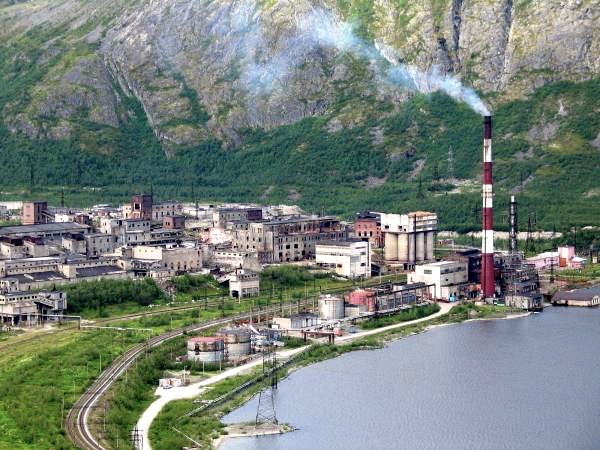
One of the “Twelve Disciple” smokestacks continues spewing poisons, as Mercury Lake fills with liquid metals in Kirovsk. The entire building site behind the smokestack is polluted and now lies abandoned. Photo by Andrew Newman
The book divides in the same pattern as a “mix-tape,” with “Side A” consisting of four stories, Side B consisting of four stories of a later date, and the “Intermission,” a story called “The Tsar of Love and Techno,” serving as the bridge. In a late story, “Palace of the People,” which refers to what was formerly the Kresty Prison in St. Petersburg , three boys in their late teens try to decide how to avoid the draft, eventually choosing to become gangsters. It is 2001 in St. Petersburg, and when one teen figures out that if he knocks off an electronics store, he’ll get three years and avoid the Chechen war completely, another replies, “Any day now Putin’s going to tear off his shirt, jump on a brown bear, ride that bitch bareback to Grozny and finish those beards by himself. Six months tops. I’ll mug a tourist.” An important book by a young novelist of immense talent, this book, filled with vibrant description, develops important ideas and emphasizes the problems of real people. I just wish it had involved my emotions as much as it did my love of literary excellence.
ALSO by Marra: A CONSTELLATION OF VITAL PHENOMENA
Photos, in order: The author’s photo appears on http://stanfordartsreview.com/
The remains of a statue of Lenin, similar to what was deposited in the playground of a school, along with one of Lenin’s arms, is from http://coffee-helps.com/2009/01/
Kresty Prison, once an imperial wine warehouse, held up to ten thousand prisoners during the worst of the Bolshevik purges. http://www.saint-petersburg.com/museums/kresty-prison-museum/
The summer photo of Kirovsk, Siberia, shows one of the “Twelve Apostle” smokestacks, in front of a closed and abandoned factory, the lake of polluted metallic waste in front. Photo by Andrew Newman. https://picasaweb.google.com/
The map of Chechnya in the south of the country is from http://kids.britannica.com/elementary/art-170874/Chechnya
